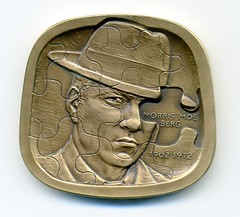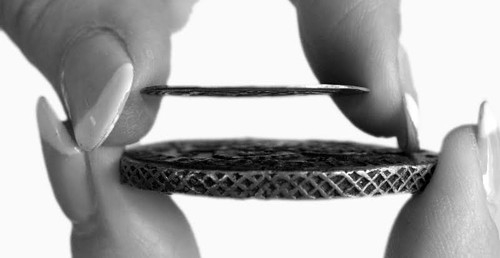
PREV ARTICLE
NEXT ARTICLE
FULL ISSUE
PREV FULL ISSUE
NOTES FROM E-SYLUM READERS: SEPTEMBER 11, 2016On The E-Sylum's 19th Anniversary
Dick Johnson writes: Congrats on The E-Sylum’s 19th Anniversary! Wayne, you are a publishing marvel. I cannot imagine that much dedication to a single project for that length of time. Every week you gather that much significant -- and interesting! – material you put on the internet. Monday mornings are a delight to read brief articles of scholarly numismatic information. You are making all of we readers better numismatists. Center stage, take a bow.
Thanks! I've learned so much myself just by being the go-between for so many smart folks over the years. -Editor
To read the earlier E-Sylum article, see:
R.W. Julian: Cent Coinage Resumed in 1815
In The E–Sylum for September 4, 2016, Bill Eckberg has a note indicating that only half eagles and quarter dollars were struck in 1815. He claims that cents were not struck in 1815 despite the mint director stating just that in his annual report. The following points apply: 1) Mr. Eckberg claims that Mint Director Robert Patterson was lying when he stated that copper coinage had resumed. Eckberg, however, does not produce any good reason for this claim except to state that the director was engaged in “bureaucratic butt-covering.” 2) There is supporting evidence for Patterson’s remark, both circumstantial and definitive. The planchets received from Matthew R. Boulton were in the Mint by December 11, 1815, and Eckberg would have us believe that nothing was done with them for several weeks even though the coining of cents would have kept the workers busy. 3) On December 27, 1815, Patterson wrote Boulton acknowledging receipt of the planchets but pointing out some problems that needed to be corrected in the next shipment. These imperfections in the planchets could only have been noticed during actual coining operations. The director in particular mentioned that the quality of the struck pieces was affected by the imperfections. 4) It is worth noting that the December 27 letter was published in the 1991 ANA Anthology, a readily available source. One has to wonder why Eckberg does not mention the 1991 article or the December 27 letter in his February 2015 Coin World and July 2015 Penny-Wise articles. 5) It may therefore be stated, with absolute certainty, that cent coinage did resume in December 1815 as reported by the director. The number struck that month, however, is unknown and likely to remain so barring the discovery of additional documentation. To read the earlier E-Sylum article, see:
Schook on Books
Earlier this week Dave Bowers came across this while drafting his monthly ANA history column for The Numismatist. -Editor
In her message in the November 1986 issue of The Numismatist President Florence M. Schook told how to increase enjoyment of numismatics: The Duchess of Windsor maintained that ‘You can never be too rich or too thin,’ though few people I know can lay claim to both. Thus, I’d like to modify that expression to make it more applicable to the topic of this message: “You can never have too many books or read too much.” My predecessor, Dave Bowers, believed that knowledge is power and urged every collector to build a personal numismatic library. Sound advice, particularly in light of the tumultuous goings-on in our hobby. If people would put down their Grey Sheets and pick up a good book, such as Bowers’ Adventures with Rare Coins or The Fantastic 1804 Dollar by Eric Newman and Ken Bressett, I guarantee that more folks would become collectors rather than just investors. The lure of coins and collecting is heightened by a sense of history, something that isn’t sold with a coin. Books are the key to understanding the wonderful attraction of our hobby. For example, to the well-read collector, a 1783 Nova Constellatio copper is much more than a worn, old coin—it represents America’s first attempt to establish a standard unit of coinage. Likewise, much more attractive than the value of a $20 Saint-Gaudens gold piece is the fascinating story of its talented designer. Building a reference library can be a costly project, though the investment is small compared to what many spend on assembling their portfolios. For those of you on a tight budget, the ANA’s Reference-Book-of-the-Month Club is a good way to add to your library. Each month members are offered the opportunity to purchase instructional, entertaining volumes at substantially reduced prices. There is no obligation to buy nor do you receive unwanted books in the mail simply because you forgot to return the ‘No Thank You’ card. To place your name on the Reference-Book-of-the-Month Club mailing list, write to the ANA. If you’re not quite ready to start assembling your numismatic library, you can still enjoy the wealth of literature available to you through the ANA Library. Members may borrow books on every conceivable numismatic topic without charge other than the cost of postage and insurance.
I forgot about the Reference-Book-of-the-Month Club. I was already buying books at a heavy pace at that point. Neat idea, but I guess
like everything, it fizzled out at some point. Were any of our readers members? What books did you get? -Editor
To read Dave's ongoing article series, see:
The Future of Numismatic Literature
I still enjoy, and immensely, the feel of holding a hardcover. My American Numismatical Manual, 1859, or my latest Guide Book won’t be replaced by digital versions anytime soon. My grandson Matthew Bowers is a freshman at Columbia University. Assignments for summer reading were the Odyssey and the Iliad. I have never read these, so will start soon. Ten years ago I would have bought hard copies. Now, I will see what Google Books offers—and at no cost.
As several contributors to the issue pointed out, there is understandably a big difference in online availability between in-copyright
and out-of-copyright works. And as Dave points out, here is still great utility and value in hardcopy books, both as historical artifacts
and as a natural method of reading text. -Editor
To read the earlier E-Sylum article, see:
Working at First Coinvestors
The article about Stanley Apfelbaum's numismatic course was of special interest to me. My first job in numismatics was at his First Coinvestor company, where I worked with Herb Melnik, Walter Breen et al. I enjoyed listening to Ed Rochette's lectures on the History of Medals. Ed is a great guy and a great numismatist To read the earlier E-Sylum article, see:
Moe Berg Jewish-American Hall of Fame Medal
 
Mel Wacks adds: I just wanted to add that there is definitely a numismatic connection with Moe Berg. In 2006, Moe Berg was inducted into the Jewish-American Hall of Fame; his medal was the first of nine designed thus far by Eugene Daub for the series. Pictures are attached. Jeff Starck of Coin World writes: I enjoyed reading Dick Johnson’s story about Moe Berg’s library in the latest E-Sylum. How has no one mentioned the Jewish-American Hall of Fame medal honoring this famous mensch? It is one of my favorite medals from the series, about which Coin World regularly reports. Here are two stories that reference the Berg medal in particular.
Thanks, everyone. Nice medal. -Editor
To read the Coin World articles, see:
To read the earlier E-Sylum article, see:
More On Coin Thickness
If I'm not mistaken, the "late 1790's kopeck" from Gary Beals you showed may actually be a 5 kopeck piece. I don't know how the value of 1 or 5 kopecks compares to a groat (4 pence), but he should compare apples to apples. Also, since I believe the groat is silver and the kopcek is copper, that would explain the difference in thickness. Certainly, the 5 kopeck piece from eighteenth century Russia is one of the more massive copper coins around, although it is surpassed by the Siberian 10 kopecks, and of course the Sestroretsk ruble, which weighed in at 1 kilogram and measured 3 inches in diameter and 1 inch thick. Then there is the Swedish 10 daler plate which weighs in at 20 kg. 
To read the earlier E-Sylum article, see:
Russian Imperial Monograms
To read the earlier E-Sylum articles, see:
Hägar the Numismatist
Howard Berlin sent in this Hägar the Horrible cartoon. Thanks! -Editor

For more Hagar the Horrible cartoons, see:

Wayne Homren, Editor The Numismatic Bibliomania Society is a non-profit organization promoting numismatic literature. See our web site at coinbooks.org. To submit items for publication in The E-Sylum, write to the Editor at this address: whomren@gmail.com To subscribe go to: https://my.binhost.com/lists/listinfo/esylum All Rights Reserved. NBS Home Page Contact the NBS webmaster 
|

